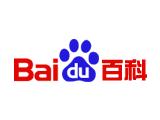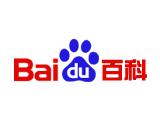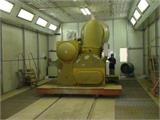Soso Encyclopedia: Coating
The entry on painting has been locked: Catalog 123456, Catalog 123456789; Hull Painting; Painting. This refers to the general term for all rust removal and painting work on steel surface treatment and ships.
Discipline: Ship Engineering (Primary Discipline); Ship Technology (Secondary Discipline).
Painting is the process of applying a coating to the base surface to form a protective, decorative or functional coating.
Discipline: Mechanical Engineering (Primary Discipline); Surface Engineering (Secondary Discipline); Paint Application (Tertiary Discipline).
Painting is an important part of the surface manufacturing process in construction machinery products. Rust prevention and anti-corrosion painting quality are important aspects of overall product quality. Product appearance quality not only reflects the product's protective and decorative performance but is also an important factor constituting product value.
Painting Process: The rust prevention painting process for construction machinery generally can be divided into pre-painting surface treatment processes and rust-proof primer application processes.
So-called painting refers to covering metal and non-metal surfaces with a protective layer or decorative layer. With the development of industrial technology, this process has expanded into multiple sectors of the national economy. The development of China’s painting production lines has undergone a process from manual operations to production lines and then to automated production lines. China’s painting process can be simply summarized as follows: →→ drying or curing → waste treatment. China's painting industry truly began after the introduction of Soviet technology in the 1950s. Starting from the 1960s, due to the development of light industry, mechanized production assembly lines and automated production assembly lines first appeared in the bicycle manufacturing industry. Additionally, program-controlled assembly lines were formed by adding sequence control carts based on existing tank assembly line productions, mainly in Shanghai and Tianjin areas. During this period, the main task of China's painting industry was still primarily focused on corrosion prevention. However, with the development of China's economy and foreign painting technologies, through technological imports and exchanges with foreign technologies, China's painting technology began to develop rapidly. In terms of automatic painting production, the promotion and application of electrostatic spraying and electrodeposition paint technology, the research and promotion of powder spraying technology, especially the vigorous development of China's home appliance industry, daily hardware, steel furniture, aluminum components, electrical products, automobile industry, etc., have made significant progress in the painting field.
1. Surface Treatment
Surface treatment is one of the important processes in rust prevention painting. The quality of rust prevention painting for construction machinery largely depends on the quality of surface treatment.
According to the British Imperial Chemical Company, the lifespan of a coating is influenced by three factors: surface treatment accounts for 60%, painting construction accounts for 25%, and the quality of the paint itself accounts for 15%.
Different parts in the construction machinery industry require different methods of surface treatment.
Mechanical cleaning can effectively remove weld spatter, oxide scale, eliminate welding stress, and increase the bonding force between the rust prevention coating and the metal substrate, thereby significantly improving the rust prevention quality of construction machinery parts. The mechanical cleaning standard requires reaching ISO8501-1:1988 Sa2.5 level. Surface roughness should reach one-third of the thickness of the rust prevention coating. The steel balls used in shot blasting and shot peening must meet GB6484 requirements.
For thin plate stampings, surface treatment is usually done using chemical surface treatment. The process flow is:
Manual pre-treatment → Hot water wash → Pre-degreasing → Degreasing → Industrial water wash one → Industrial water wash two → Surface adjustment → Phosphating → Industrial water wash three → Industrial water wash four → Pure water wash one → Pure water wash two → Water drainage → Drying
The above process can be adjusted appropriately according to the oil and rust conditions of the thin plate stampings, or without acid washing steps, or without pre-degreasing steps. Degreasing and phosphating are key steps in the chemical treatment process, directly affecting the quality of the chemical treatment and the rust prevention coating. Relevant process parameters and related auxiliary equipment also play an important role in the quality of surface treatment.
2. Painting Process
Due to the wide range of construction machinery, many specifications, heavy whole machines, and large parts, spray painting is generally used for painting. Spray tools include high-pressure airless spray guns, air-assisted spray guns, and handheld ones. Air spray guns have low efficiency (around 30%), while high-pressure airless spray guns waste paint. Both cause relatively serious environmental pollution, so they are being replaced by air-assisted spray guns and handheld electrostatic spray guns. For example, Caterpillar Inc., the world's largest construction machinery company, uses air-assisted spray guns for painting. For engine hoods and other thin sheet metal coverings, handheld electrostatic spray guns are used. Construction machinery painting equipment generally uses more advanced water vortex systems. Small and medium-sized parts can use water curtain spray booths or pump-free spray booths. The former has advanced performance, while the latter is economical and practical. Due to the weight and high heat capacity of construction machinery whole machines and parts, their rust prevention coatings are generally dried using a hot air convection drying method with uniform baking. Heat sources can be chosen based on local conditions, such as steam, electricity, light diesel, natural gas, and liquefied petroleum gas.
Environmental Protection
In the design of construction machinery painting, environmental protection is a very important issue. Its basis includes:
①GB8978—7996;
②GB16297—1996;
③GB12348—90 changed to GB12348-2008;
④JBJ16—2000 "Design Code for Environmental Protection in Machinery Industry" etc.
It is essential to strictly implement relevant designs and constructions to prevent pollution and other public nuisances, following the 'three simultaneous' system where the main project should be designed, constructed, and put into operation simultaneously.
In the rust prevention painting project of construction machinery, periodically discharged paint wastewater and chemically treated acidic and alkaline wastewater should be collected and regulated before being treated by a specialized wastewater treatment unit. Only when it meets the national standards pH=6~9, SS=70mg/L, COD=100mg·L⁻¹, and oil content less than 5mg/L can it be discharged.
Additionally, measures must be taken to treat exhaust gas, waste residue, noise, etc., to ensure compliance.
In terms of labor safety and hygiene, relevant national standards include:
①GBJ16—87(2001 edition) "Fire Prevention Design Code for Building Design"
②JBJ18—2000 "Design Code for Occupational Safety and Health in Machinery Industry"
③GB6514—1995 "Safety Regulations for Coating Operations - Safety of Coating Processes and Ventilation and Purification"
④GB14443—1993 "Safety Regulations for Coating Operations - Technical Specifications for Safety of Coating Drying Rooms"
⑤GB14444—1993 "Safety Regulations for Coating Operations - Technical Specifications for Safety of Spray Booths" etc.
As an enterprise, on the one hand, it is necessary to increase investment in safety facilities and safety protection, and on the other hand, strengthen safety and health education and management in workshops. While ensuring safe production, it is also crucial to protect the physical health of operators and strictly enforce national and corporate labor safety and industrial hygiene standards.
Evaluation: Entry Evaluation: 3 points (Evaluated by 11 people).



